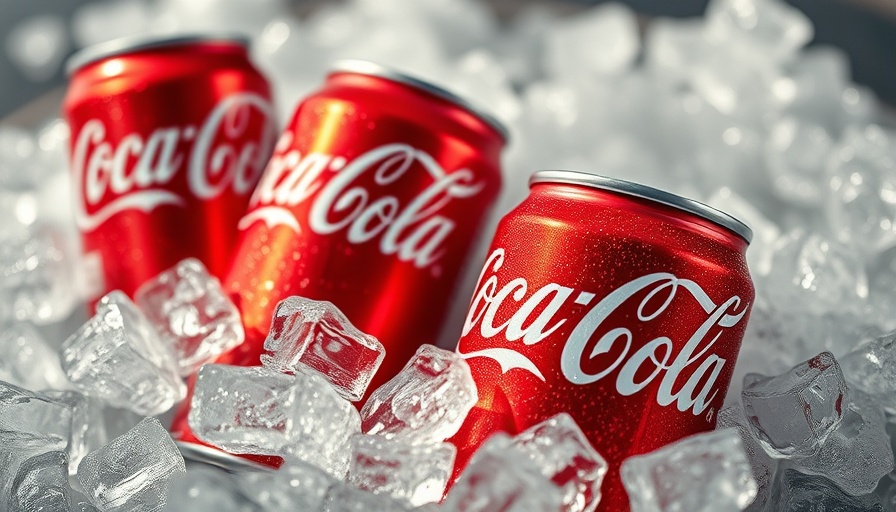
Cane Sugar vs. Corn Syrup: The Ongoing Debate
The announcement from President Trump regarding Coca-Cola’s decision to introduce a cane sugar version of its iconic soda has sparked significant debate. While Coca-Cola’s move aims to diversify its product offerings, it also raises critical questions about U.S. sugar policies and consumer prices. Understanding the historical context of sugar production in the U.S. offers insight into the current dynamics at play.
How Government Policy Shapes Consumer Choices
The reason many sodas in the U.S. incorporate high-fructose corn syrup (HFCS) instead of cane sugar can largely be traced back to government intervention. Since the 1980s, U.S. agricultural policies, including subsidies for corn production, have ensured that HFCS remains an economical sweetener for beverage manufacturers. Meanwhile, tariffs on imported cane sugar increase its price, making it less appealing for large-scale production in mainstream sodas.
This subsidy-driven pricing structure suggests a clear preference within the industry for HFCS, despite some consumers citing a preference for the taste of cane sugar. A direct consequence of this imbalance is that consumers are left with fewer choices and greater dependence on a single, less healthful sweetener.
The Price Tag on Cane Sugar Coke
With Coca-Cola set to roll out its cane sugar version of Coke, consumers are left wondering: will this option come at a higher price point? Economic forecasts indicate that introducing cane sugar into the production line may indeed increase the cost of production, which could lead to higher retail prices. Notably, this is not the first time consumers have faced price hikes tied to sugar content; the implementation of soda taxes in various U.S. states is a prime example of how government policies can affect pricing.
Public Opinion and Sugar Taxes
Public sentiment surrounding sugar taxes has grown increasingly complex. While such taxes are intended to reduce sugar consumption due to health considerations, they often lead to higher prices for consumers. The question then emerges: are consumers willing to pay a premium for what they perceive as a healthier choice in cane sugar Coke?
American consumers have started demonstrating a willingness to explore healthier alternatives, but whether they will accept higher prices for can sugar-derived products remains to be seen. Historical sales data suggest that when premium options are offered, there is a segment of the market that gravitates toward them, but the key will be Coca-Cola's pricing strategy.
Can Cane Sugar Win Over American Palates?
Marketing plays a pivotal role in consumer choices. Coca-Cola has a storied heritage and immense brand recognition, which may sway consumers eager to try cane sugar options. Yet, this ambition hinges on a significant marketing effort that emphasizes the perceived benefits of cane sugar versus HFCS—touting taste, naturalness, and health implications.
Moreover, international markets have already provided some insight. In Mexico, Coca-Cola has thrived on cane sugar usage. Could this success be replicated in the U.S., or will entrenched habits and marketing investments in HFCS prove too resilient for consumers to abandon?
Looking Ahead: An Economic Lens
The interplay between U.S. agricultural policy and consumer preferences creates a fascinating intersection for economic analysis. The candidacy of cane sugar Coke introduces numerous possibilities to explore. Will this shift drive other beverage producers to reconsider their sweetening agents? And what would the implications be for public health, consumer spending, and the broader agricultural industry?
As Coca-Cola embarks on this new venture, the economic landscape invites consumers and analysts alike to pay attention. The success of cane sugar Coke may well depend not only on taste preferences but also on how effectively Coca-Cola can communicate its value proposition tied to this ingredient change.
Final Thoughts: The Consumer’s Role
Ultimately, the decision lies with American consumers. As they weigh their options, they must consider the broader implications of their purchasing decisions—not just economic, but also health-related. Will they embrace higher prices for cane sugar Coke, or will they remain loyal to more affordable HFCS alternatives?
In the end, if there is a collective movement toward quality over quantity, it could signal a significant shift in how sweeteners are perceived and produced in the U.S.
 Add Row
Add Row  Add
Add 




Write A Comment